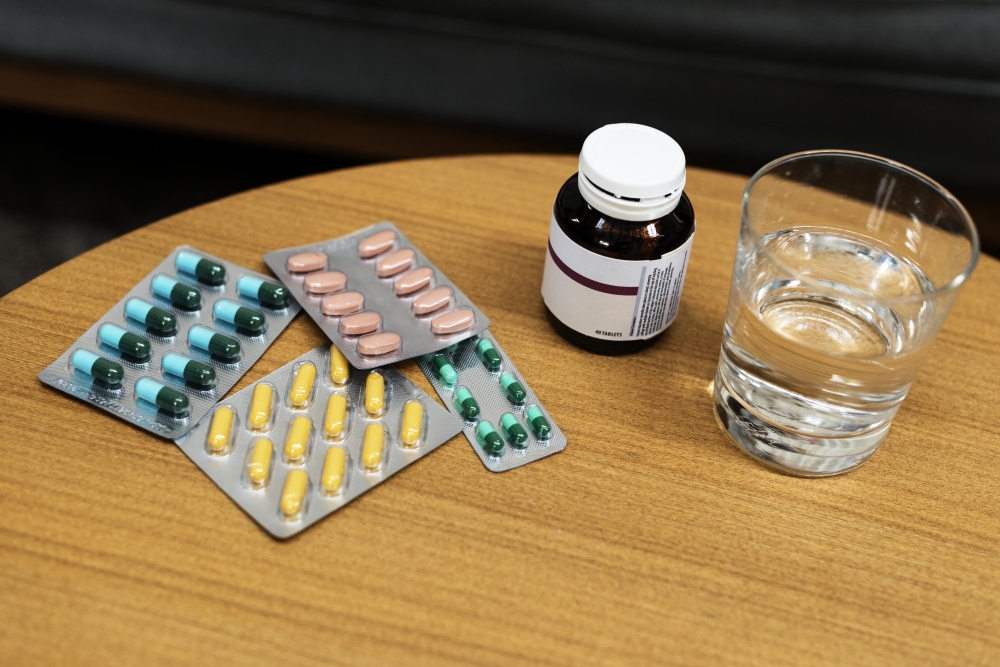The Ministry of Health's commission did not change the list of vital and essential drugs and planned adjustments to its work procedures.

The combination of ivacaftor + tezacaftor + elexacaftor and ivacaftor for the treatment of orphan cystic fibrosis has been available in Russia since June 2023: the American company Vertex Pharmaceuticals registered the drug under the trade name Trikafta, and the French company Sanofi is distributing the drug in the country. At the end of that year, the Russian distributor Medical Research Company (MIC) received a compulsory license for 10 of the 12 patents protecting the originator's exclusive rights to Trikafta, allowing it to launch Trilexa, a generic version from the Argentine company Tuteur, on the domestic market. The generic version of the drug began to be sold through state procurement in the second half of 2024.
The request to add the INN to the list of vital and essential drugs was submitted by the "MIC." As experts clarified at a meeting of the Ministry of Health commission, there are currently 4,815 patients registered with cystic fibrosis in Russia. Most of them are provided with the medication through the state-run "Circle of Goodness" foundation. However, 1,722 patients are over 18 years old, and for them, the medication must be purchased through regional procurement. A total of 1,549 adult patients have indications for Trikafta or Trilexa, but 50% of them do not receive treatment.
MIK proposed a maximum selling price for the generic version of 733,000 rubles. Sanofi also sent a letter to the commission, emphasizing that it would not be able to supply Trikafta to Russia if the registered price was below 1.13 million rubles. Sanofi told Vademecum that the original drug is still being supplied to Russia and purchased by several regions.
Last year, during the launch of the generic Trikafta, the patient community expressed doubts about the efficacy of the Argentine drug. This issue was revisited during the current discussion. In October 2025, specialists from the Cystic Fibrosis Clinical Research Department of the N.P. Bochkov Medical and Genetic Research Center presented the results of a study of 151 patients from seven Russian regions at a press briefing in Astrakhan. The patients were switched to Trilexa. During the three-month follow-up period after the therapy switch, clinicians recorded continued improvement in lung function and body mass index. Doctors concluded that the therapy was well tolerated, and the incidence of adverse reactions to the generic drug did not exceed those with the original medication. Representatives of the Pirogov Russian National Research Medical University also noted the interchangeability of Trikafta and Trilexa at the meeting.
However, members of the relevant commission noted that MIC did not provide sufficient data in the registration dossier to conduct pharmacoeconomic calculations. Representatives of the Ministry of Health also drew attention to last year's procurement by the Tula Region Ministry of Health, in which Trilexa was supplied at a price of 694,000 rubles per package. MIC responded that the price reduction was due to special conditions—a limited expiration date on the medication purchased by the customer.
The Federal Antimonopoly Service (FAS) noted that the proposed price of 733,000 rubles for Trilexa is 25% lower than the price for the drug's domestic market in Argentina. The Ministry of Industry and Trade emphasized that it has not yet inspected the production sites where the original and generic versions of the medications are manufactured; such inspections are not scheduled until 2026. Meanwhile, the MIC (Moscow Antimonopoly Committee) reported that next year, Trilexa production will be localized to the packaging stage at the Russian manufacturer's facilities. The commission unanimously voted against including ivacaftor + tezacaftor + elexacaftor and ivacaftor in the Vital and Essential Drugs List, recommending that Sanofi submit the data by April 2026 and that MIC (Moscow Antimonopoly Committee) finalize the registration dossier.
The Ministry of Health reported that the removal of zuclopenthixol from the list was initiated by the Danish manufacturer Lundbeck, which produces the original Clopixol, used to treat acute and chronic schizophrenia and other psychotic disorders. The company is leaving the Russian market and transferring rights to its portfolio to Swixx Group. The committee members emphasized that the manufacturer had previously attempted to raise its registered maximum selling price. Two members voted in favor of removing the drug from the list, while 17 voted against.
The commission also rejected the inclusion of pegunigalsidase alfa (Elfabrio, manufactured by the Italian company Chiesi) as a vital and essential drug. The drug is used to treat the orphan drug Fabry disease. At the previous meeting, in August 2025, the experts approved the inclusion of the drug, but this decision was appealed by the Russian company Petrovax. The company insisted that the Center for Expertise and Quality Control of Medical Care (CEQMC) incorrectly calculated the cost of Chiesi's drug and falsely concluded that it was cheaper than the comparison drug, agalsidase beta (Fabagal, manufactured by Petrovax).
Sergey Kutsev, the Ministry of Health's chief specialist in medical genetics, reiterated that pegunigalsidase alfa has lower immunogenicity and no less clinical efficacy, and the drug will only be prescribed to 20% of patients. The Ministry of Health and the Federal Antimonopoly Service, in turn, promised Kutsev to support the decision to divide Fabry disease therapy into several lines in clinical guidelines for the disease. The Center for Expertise and Quality Management of Medical Products (CECM) presented updated calculations: treatment with this drug will be less expensive for patients of a certain weight than agalsidase beta. The center emphasized that this will personalize the treatment approach from a pharmacoeconomic perspective. Chiesi, however, once again reduced the proposed price to 62,000 rubles (70% lower than in reference countries) and promised to register a new dosage of Elfabrio—5 mg. Petrovax previously expressed concerns about the disposal of significant quantities of the drug and the unjustified waste of budget funds due to excessive quantities of Elfabrio vials. Twelve commission members voted against including pegunigalsidase alfa in the VED list, while seven voted in favor.
At the end of the meeting, Timofey Nizhegorodtsev addressed the issue of the maximum price for agalsidase alfa (Replagal, a Japanese drug manufacturer, Takeda), which is already included in the VED list and is used to treat Fabry disease. According to the FAS representative, the drug's price should be reduced by almost half, to the level of Fabagal. Currently, the two drugs share the market equally. After lengthy debate, the Ministry of Health commission concluded that it lacked the authority to force price changes and proposed that the FAS independently address the issue of re-registration of the price for agalsidase alfa. Representatives of the Ministry of Health should explore the possibility of adjusting the procedures of the relevant commission, allowing it to independently initiate drug removals from the lists and price changes.
vademec




